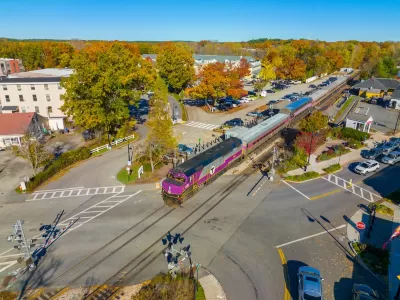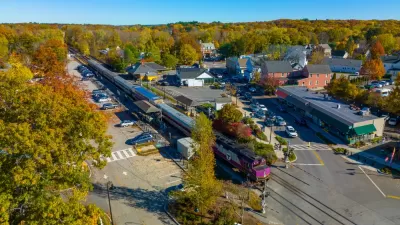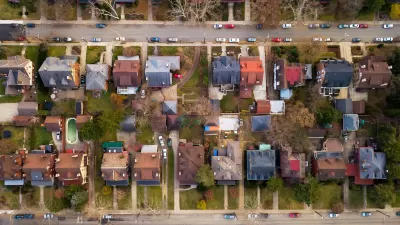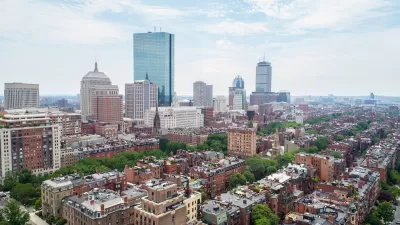While some cities are fighting the state’s push to increase density near transit, others are already breaking ground on multifamily projects that will bring hundreds of new housing units online.

Massachusetts communities are responding in varied ways to the state’s MBTA Communities Act, a zoning reform mandate that calls on cities to streamline permitting for residential developments near transit stations.
As Abby Patkin explains in an article for Boston.com, some cities, like Milton, are fighting the state’s effort to boost the housing supply, while others are embracing the change and making way for higher-density housing. “Take Lexington, where housing proposals have begun pouring in. Or Westwood, which recently saw a 160-unit mixed-use project break ground. Somerville, meanwhile, is in the midst of a triple-decker renaissance.” In Lexington, the seven proposals submitted to the city would create 960 total new housing units. The town is working with developers to conduct water and sewer capacity analyses in advance of construction to ensure local infrastructure can handle the new housing.
The law requires the 177 communities served by MBTA transit lines to adjust zoning around stations to allow for higher-density multifamily housing. “Whether the law will be as transformative as lawmakers hoped remains to be seen, though affordable housing advocates say it’s a step in the right direction,” Patkin adds.
Zoning expert Amy Dain notes that while MBTA Communities could make a major impact on the housing supply, it won’t be enough to end the housing crisis. “[E]ven if MBTA Communities is fully implemented, there’s going to be more work ahead to make sure there’s housing for everybody, and appropriate housing, safe housing, diverse housing, and housing in places where people want to live and have access to jobs and schools and places they want to go to.”
FULL STORY: These towns are seeing results from the MBTA Communities Act

Study: Maui’s Plan to Convert Vacation Rentals to Long-Term Housing Could Cause Nearly $1 Billion Economic Loss
The plan would reduce visitor accommodation by 25,% resulting in 1,900 jobs lost.

North Texas Transit Leaders Tout Benefits of TOD for Growing Region
At a summit focused on transit-oriented development, policymakers discussed how North Texas’ expanded light rail system can serve as a tool for economic growth.

Why Should We Subsidize Public Transportation?
Many public transit agencies face financial stress due to rising costs, declining fare revenue, and declining subsidies. Transit advocates must provide a strong business case for increasing public transit funding.

How to Make US Trains Faster
Changes to boarding platforms and a switch to electric trains could improve U.S. passenger rail service without the added cost of high-speed rail.

Columbia’s Revitalized ‘Loop’ Is a Hub for Local Entrepreneurs
A focus on small businesses is helping a commercial corridor in Columbia, Missouri thrive.

Invasive Insect Threatens Minnesota’s Ash Forests
The Emerald Ash Borer is a rapidly spreading invasive pest threatening Minnesota’s ash trees, and homeowners are encouraged to plant diverse replacement species, avoid moving ash firewood, and monitor for signs of infestation.
Urban Design for Planners 1: Software Tools
This six-course series explores essential urban design concepts using open source software and equips planners with the tools they need to participate fully in the urban design process.
Planning for Universal Design
Learn the tools for implementing Universal Design in planning regulations.
Ascent Environmental
Borough of Carlisle
Institute for Housing and Urban Development Studies (IHS)
City of Grandview
Harvard GSD Executive Education
Toledo-Lucas County Plan Commissions
Salt Lake City
NYU Wagner Graduate School of Public Service





























